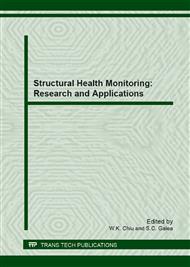p.268
p.281
p.289
p.297
p.305
p.314
p.323
p.331
p.341
Flight Tests Performed by EMBRAER with SHM Systems
Abstract:
This paper presents an overview of a set of tests performed by Embraer with two different SHM technologies in an E-Jets flight tests aircraft. Considered as promising technologies for monitoring structural parts, sensors networks including cables and connectors of CVM (Comparative Vacuum Monitoring) and LW (Lamb Waves) were installed in an Embraer-190 aircraft. The two technologies have been investigated by Embraer within the companys effort on Structural Health Monitoring. Scheduled maintenance and inspection activities can take advantage of the SHM technologies by evaluating the structural integrity of an aircraft with on-board sensors and performing less time-consuming procedures compared to current NDT technologies which can not only reduce the amount of time and burden of those activities, but also minimize the effects of human-factors when compared to current inspection tasks. The tests performed with CVM and LW components (sensors, connectors and cables) installed in a flight tests aircraft focus on the investigation of the technologies capabilities of withstanding the real aircraft operational conditions. Periodic monitoring of these on-board sensors has been performed using CVM and LW ground equipments. A further phase of this project is currently under development and focus on the demonstration of an on-board in-flight version of the CVM instrumentation system for continuous monitoring of aircraft structures during flight, aiming to demonstrate the ability of the CVM on-board equipment to withstand the aircraft in-flight environmental and operational conditions. Preliminary results on both partially and totally on-board equipments indicate that they can withstand the environmental and operational conditions; however, further tests need to be performed. Performing periodic inspections on ground with SHM systems lead to different qualification requirements when compared to those required for a complete on-board system that performs continuous monitoring. An overview of those two aspects of qualification requirements will also be presented.
Info:
Periodical:
Pages:
305-313
Citation:
Online since:
June 2013
Keywords:
Price:
Сopyright:
© 2013 Trans Tech Publications Ltd. All Rights Reserved
Share:
Citation:


